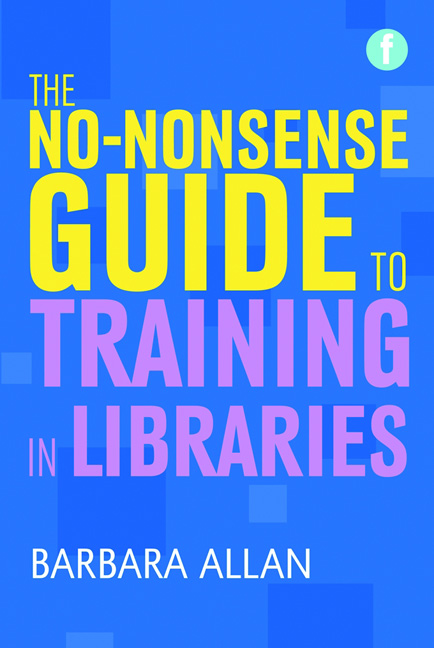Book contents
- Frontmatter
- Contents
- Acknowledgements
- 1 Introduction
- Part 1 Training practices
- 2 Different approaches to learning and teaching
- 3 Making training interesting
- 4 Use of different technologies to support training practices
- 5 Making it happen
- 6 Delivering face-to-face training sessions
- 7 E-learning and blended learning
- Part 2 Learning in the workplace
- Index
3 - Making training interesting
from Part 1 - Training practices
Published online by Cambridge University Press: 08 June 2018
- Frontmatter
- Contents
- Acknowledgements
- 1 Introduction
- Part 1 Training practices
- 2 Different approaches to learning and teaching
- 3 Making training interesting
- 4 Use of different technologies to support training practices
- 5 Making it happen
- 6 Delivering face-to-face training sessions
- 7 E-learning and blended learning
- Part 2 Learning in the workplace
- Index
Summary
Introduction
The purpose of this chapter is to provide an overview of different methods of delivering learning and teaching. A combination of these different methods may be included in a training session in order to engage the learners and enhance their learning experience. The training methods are listed in alphabetical order.
Additional training methods which involve the use of ICTs are described in Chapter 4, and Chapter 8 provides a guide to over 90 workplace learning activities which may be incorporated into training programmes.
Action planning
Action plans are frequently used as a means of encouraging learners to identify what they are going to do either during or after the training event. The process of writing an action plan and then sharing it with peers, trainers or work colleagues can be extremely motivating. The key to a good action plan is that it should be SMART:
• Specific, i.e. the action is identifiable
• Measurable, i.e. there is something to see or hear that will show that the action has taken place
• Achievable, i.e. the action is manageable within the context of the training course and the working environment of the library
• Relevant, i.e. the learner will immediately understand its relevance to him or her
• Time bound, i.e. a deadline is set for the action, or time is allocated to it on a regular basis.
A simple and practical approach to action planning is to hand out a sticky note to each participant and ask her/him to identify and write down an action that they will do as a result of the training event. They can then share this with a colleague or the whole group. Participants can take the sticky note away with them from the training as a reminder of their intended action. Alternatively, participants can be asked to complete an action planning form – an example is provided in Figure 3.1.
Activities
Most trainers develop a range of activities which help them to engage learners in the topic under consideration. A general principle for all activities is that you need to:
• identify a clear learning outcome for the activity
• require an output from the activity, either by individuals or by groups
• think about the levels of experience and confidence of participants
• think about how you will support individuals who have additional needs
- Type
- Chapter
- Information
- The No-nonsense Guide to Training in Libraries , pp. 33 - 60Publisher: FacetPrint publication year: 2013



